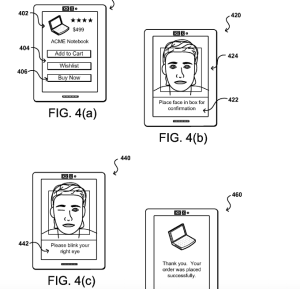Amazon Files Patent For Pay-By-Selfie System
MasterCard may have rolled out its new “selfie” verification system last month, but it’s not the only company to take consumers’ love of self portraits and turn it into a way to make money. To that end, Amazon recently filed a patent for a so-called selfie pay system.
The service, which is related to another patent Amazon already owns that allows for photo verification of a shopper, aims to make it safer for shoppers to buy things online, Re/Code reports.
According to the patent application, Amazon customers would be able to make a purchase by taking a photo and/or video of themselves rather than keying in their account password.
“As people are utilizing computing devices for an increasing variety of tasks, there is a corresponding need to improve the security available for these tasks,” Amazon says in the patent application. “While many conventional approaches rely on password entry for user authentication, these passwords can be stolen or discovered by other persons who can impersonate the user for any of a variety of tasks.”
Additionally, Amazon contends that using passwords on portable devices is “not user friendly in many cases, as the small touchscreen or keyboard elements can be difficult to accurately select using a relatively large human finger, and can require the user to turn away from friends or co-workers when entering a password, which can be awkward or embarrassing in many situations.”
As a result, the company is working on its own selfie pay application.
Under the system, a transaction is authorized using an “authentication process that prompts the user to perform an action in view of a camera or sensor.”
Much like MasterCard’s selfie verification system – which requires that the user blink to confirm they aren’t merely holding up a photo – Amazon’s technology necessitates the user to perform “an action indicative of a physical person, such as by blinking or making another such motion.”
The device – a smartphone, tablet, or computer — then verifies that the image information corresponds to a living human using one or more human-verification processes.
Want more consumer news? Visit our parent organization, Consumer Reports, for the latest on scams, recalls, and other consumer issues.


